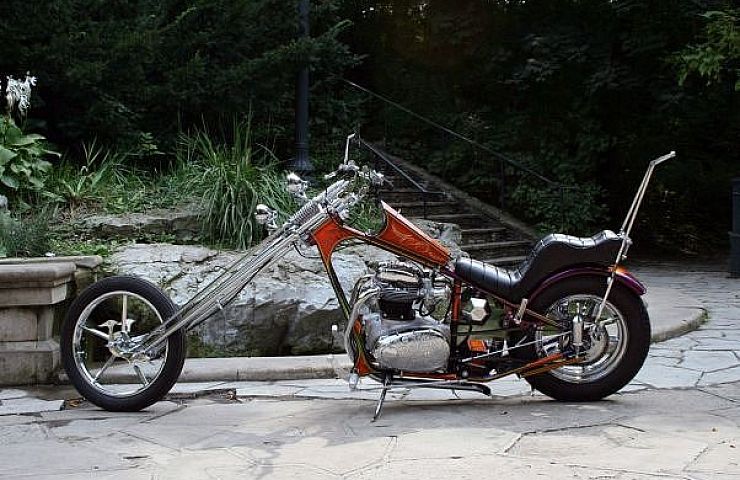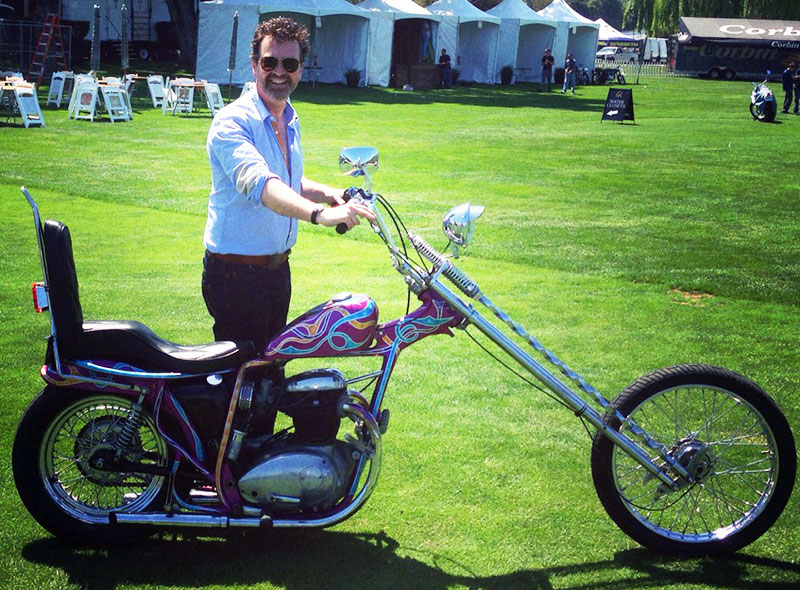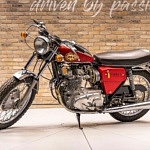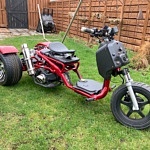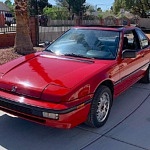The chopper movement didn’t begin with Peter Fonda straddling the Captain America bike in Easy Rider, nor will it end when the riders of his generation burn rubber through the Pearly Gates. The trend began after World War II with bobbers: road bikes modified, often by removing the fenders, for better racing performance. Eventually, the focus changed to modifying road bikes purely for style.
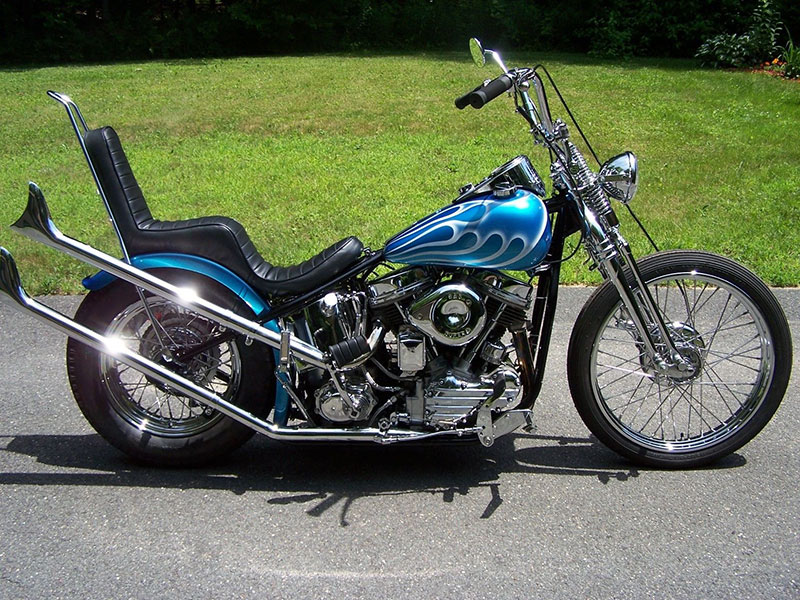
1955 Harley-Davidson Panhead bobber/chopper.
The term chopper literally refers to chopping the bike frame tubes to make the bike longer. In the early days, American and British bikes were the starting point because they were affordable, leaving money in the budget for longer forks, a fat bob tank, sissy bar, and ape hanger handle bars.
Paul d’Orleans, custom and style editor for Cycle World magazine and author of The Vintagent blog, owns a chopped BSA, built in the mid-1970s. (The photo of the top of this post is a vintage 1971 BSA Thunderbolt chopper recently listed on eBay.)
“I bought the BSA because it’s an original period chopper in great condition, said d’Orleans. “Choppers are a form of folk art. I believe that at some point pre-1971 models will become highly collectible. We are already seeing a trend where prices for original period choppers from the early 1960s are going for $50,000 to $60,000.”
Many of the early choppers didn’t handle well at slow speeds because their creators didn’t understand the concept of rake and trail. Rake refers to the angle between the front forks and the ground. Changing the rake by modifying the bike frame also changes the trail: the fore-and-aft distance between the pivot axis of the forks and the contact patch the front tire makes with the road.
In the early 1970s Mike Vils, a motorcycle enthusiast who worked for Yamaha, developed the correct geometry to make choppers steer properly. Vils, who rode his Harley-Davidson Panhead chopper to work, was able to keep up with the Yamaha engineers riding factory original bikes. His work was instrumental in preventing the US government from instituting a ban on choppers as unsafe vehicles.
d’Orleans sees three trends in the current market: original period bikes, “super-hip” riders who he describes as “trying to capture the Easy Rider vibe,” and the DirtBag brigade, referring to participants at the annual show in San Francisco. The Born-Free show, scheduled for June 25-26 at Oak Canyon Ranch in Orange Country, Calif. is the place to see the second group. The focus of the show is vintage bikes and custom builders, including 25 invited builders that represent the best of individual craftsman, garage owners, and small businesses. The DirtBag Challenge that holds its first event in New York on May 8 takes the opposite approach to Born-Free. Call it the dark side of the moon.
Participants have one month to build a chopper, with a maximum budget of $1,000 for the bike and any parts used to modify it. Harleys are not allowed, since the purpose of the challenge is “thinking outside the box.” Once at the show, bike owners have to ride their creations over a 100-mile course covering a variety of surfaces. We love this approach because it comes closest to the roots of the chopper movement: making rolling art from readily available materials.
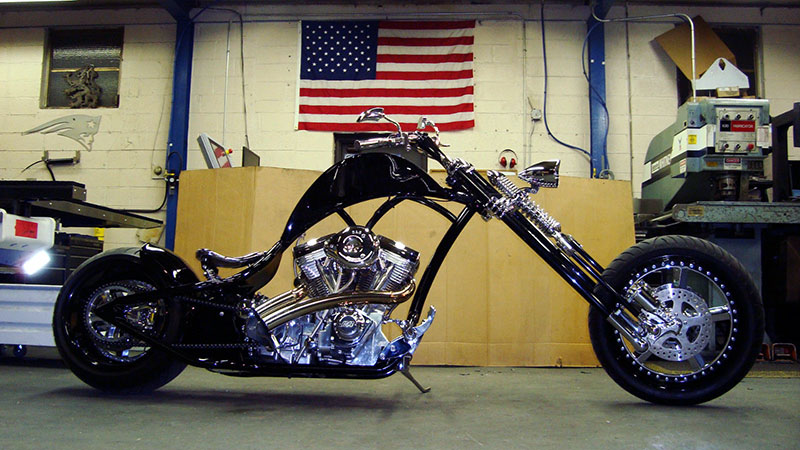
Hammer of the Gods, a custom-built chopper now listed in eBay.
Although builders all over the world create choppers, there’s something uniquely American about the genre: its unapologetic sense of style and home-grown ingenuity are part of a bigger consciousness in a place where a free spirit is cherished above all else. There’s a bit of Captain America in all of us.

